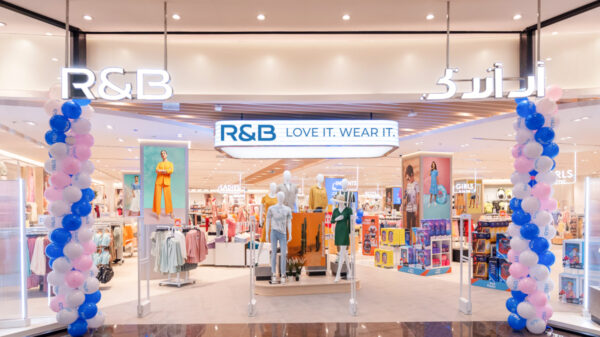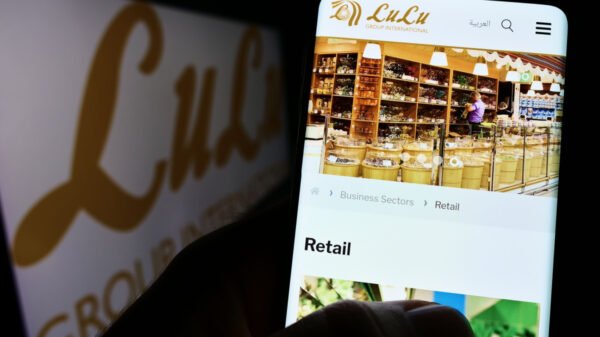For Middle East retailers, 2022 was a rich year after the two turbulent years, fraught with uncertainties.
Now major retailers in the region are vigorously pushed to polish their strategy to keep up the momentum in the ever-evolving sector. As an accounting firm, PwC pointed out “Change is the one constant for retail CEOs in the Middle East”.
While all eyes are on e-commerce, shopping malls still hold sway
According to Laoret localisation provider, e-commerce has skyrocketed during this period but, once the restrictions were eased, the brick-and-mortar sector started to bounce back with a vengeance. This trend is inherent to the Middle East region since malls form an integral element of the social structure.
“The malls in Dubai play a role more than just a shopping centre. The malls are like community centres where entertainment and social events happen,” Ali AlShamsi, a financial trader and entrepreneur based in Dubai, said to Business Insider.
“Besides, it’s too hot to do activities outdoors in summer.”
Justin Thomas, an associate professor of psychology at Zayed University, echoed this sentiment in 2014: “The mall is a social space, not just a shopping space.”
Nevertheless, it has become apparent that both online and physical retail formats are essential and not-interchangeable, especially for Middle Eastern youngsters.
CEO of Majid Al Futtaim Retail, Hani Weiss, said: “Despite the recent e-commerce boom, we are witnessing transformations across retail’s physical stores. We’ve seen three times growth in our omnichannel customers, and the share of omni customers in our base vs. single-channel customers has increased by four times.
“As a result, we see value in physical stores; however, they need to be reimagined using technological advancements to enhance customer experience and efficiency. This creates new opportunities for digitally driven brick-and-mortar initiatives.”
Implicit here is the conclusion that within the retail ecosystem the online and brick-and-mortar are mutually complementary, with both segments equally valued by customers. Thus, both physical and virtual retail experiences must mesh as customers do not distinguish between online and offline shopping. For example, even though customers tend to browse products online, they end up visiting stores to see and touch products.
As head of marketing for Cluster in the Middle East, Ruqaiyah Jaffery, said: “Consumers with smartphones have already become accustomed to supplementing normal life experiences with digital content. Phygital marketing, therefore, represents the next logical step. Enterprises and brands addressing these behaviours effectively stand to gain considerable ground on competitors ignoring the opportunity to address their target audience with immersive phygital experiences.
“It’s really a win-win for both worlds. Phygital components can provide more personalized experiences to customers resulting in increased in-store visits, enhanced loyalty, customer engagement and a greater share of wallets. Add into this mix, M-commerce and the increasing use of mobiles, and the success of apps such as Pokémon Go — where the search for digital creatures in the physical world thrives — the need to constantly adapt is mounting.”
The recent Dubai Chamber of Commerce report concerning the state of the UAE e-commerce sector highlighted the uptick in online shopping in the country, which reached $4.8 billion last year increasing by more than 50 per cent since 2019. This proves consumers still have a strong preference for online shopping and this trend will continue into 2023.
In response to the booming e-commerce, numerous retailers started gravitating towards omnichannel strategies that use digital advancement magnified by the hyper-personal connection.
Global and local: bridging the gap
Driving home the crucial role of the personalised touch, a recent BCG study demonstrates that retailers enjoyed a 25 per cent increase in revenue based on the Personalisation Maturity Index due to their active use of advanced personalisation capabilities.
Similarly, founder and CEO of US customer engagement platform MoEngage, Raviteja Dodda, said: “Brands have to realise that one of the elements that draw customers to their products is personalisation of communication. Customers love it and value it over general campaigns. Personalised marketing is going beyond addressing the customer by first name in marketing emails. It’s about leveraging customer data to reach the right person with the right message at the right moment and with the right suggestions so that there is an easy conversion. This is possible when brands use insightful data to comprehend what the customer is looking for in a brand.”
Nevertheless, the most revealing finding uncovered by the report was the triumph of domestic e-commerce entities in the local market, which stood for 73 per cent of total sales last year. Clearly, this shows how homegrown retailers have an edge over international counterparts thanks to their more nuanced knowledge of local market conditions and culture at large.
Therefore, it is essential for global brands to invest in local partnerships to leverage their profound knowledge of the regional market to focus on localisation or even glocalisation— a compromise between the global and local.









